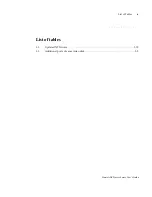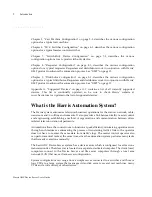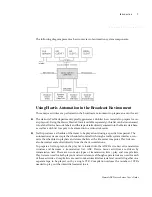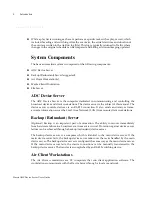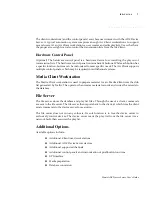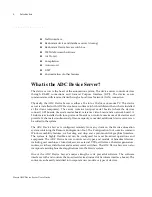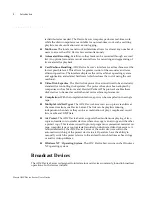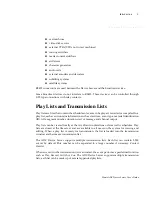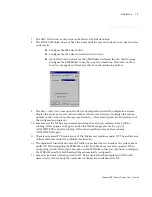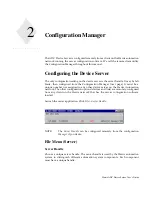
Harris ADC Device Server User’s Guide
10
Introduction
During configuration of the devices, each transmission list (transmission window) is assigned
specific broadcast devices. Devices are assigned to lists as resources. During playout of the
transmission list, the devices assigned to the list are available to run the events in the list. Each
transmission list controls a separate channel. This feature allows for simultaneous multi-
channel operations. In addition, cart machine VTRs can be assigned to two or more
transmission lists for two (or more) channel operations controlled by the one cart machine. Or,
the cart machine VTRs can be assigned different tasks. For example, two VTRs might be used
for playout, one for record, and one for compile. Video disk servers with multiple ports can be
shared between transmission lists.
The ADC Device Server plays each event in the list sequentialy until the operator intervenes
or specific types of events, such as live events or time-triggered events, are encountered. An
event runs according to where the event is located in the list or what time (if any) is entered for
the event. If changes to the list are needed during playout, the user can directly edit an event
in the list. (The only limitation on the time is the ability of the device to ready the material for
air; e.g., sufficient time is allowed for cueing and pre-roll of the edited event).
Playout can be controlled by the control panel (software or hardware). Using the control panel
buttons, it is possible to skip events, hold up the events past their EOM (end of message time),
and recue events and then restart them. An on-air event can also be edited by either adding or
subtracting a second to the event’s duration.
Automated Recording
An optional ADC Device Server record function provides for automated recording of material.
A recording can be set up for a specific date and time and set duration.
A record list is similar to a play list but just contains record events. Also like the playlist, the
record list is loaded into a transmission window to run the events in the list.
A secondary record event, also an ADC Device Server option, is available for recordings
scheduled for immediate play out. The secondary record event feature uses a playlist that has
both record and play events. This feature can store program segment information (for future
replay of a live event).
The ADC Device Server can use any VTR or video disk in the system for a recording. For long
VTR recordings that require several tapes or to create duplicate copies of a show, several VTRs
can be assigned. This also allows multiple recordings to take place simulultaneously using the
same list.
The ADC Device Server controls input audio and video switching when the recording begins.
Recordings can be made from program output or from external feeds, such as satellite.
Содержание ADC 100
Страница 1: ...ADC 100 Device Server User s Guide...
Страница 2: ......
Страница 6: ......
Страница 12: ...Harris ADC Device Server User s Guide vi Contents...
Страница 14: ...Harris ADC Device Server User s Guide viii List of Figures...
Страница 16: ...Harris ADC Device Server User s Guide x List of Tables...
Страница 28: ...Harris ADC Device Server User s Guide 12 Introduction...
Страница 62: ...Harris ADC Device Server User s Guide 2 24 Configuration Manager...
Страница 80: ...Harris ADC Device Server User s Guide 3 18 Video Disk Configuration...
Страница 90: ...Harris ADC Device Server User s Guide 5 6 Cart Machine Configuration...
Страница 116: ...Harris ADC Device Server User s Guide 9 6 Distributor Configuration...
Страница 128: ...Harris ADC Device Server User s Guide I 6 Index...




